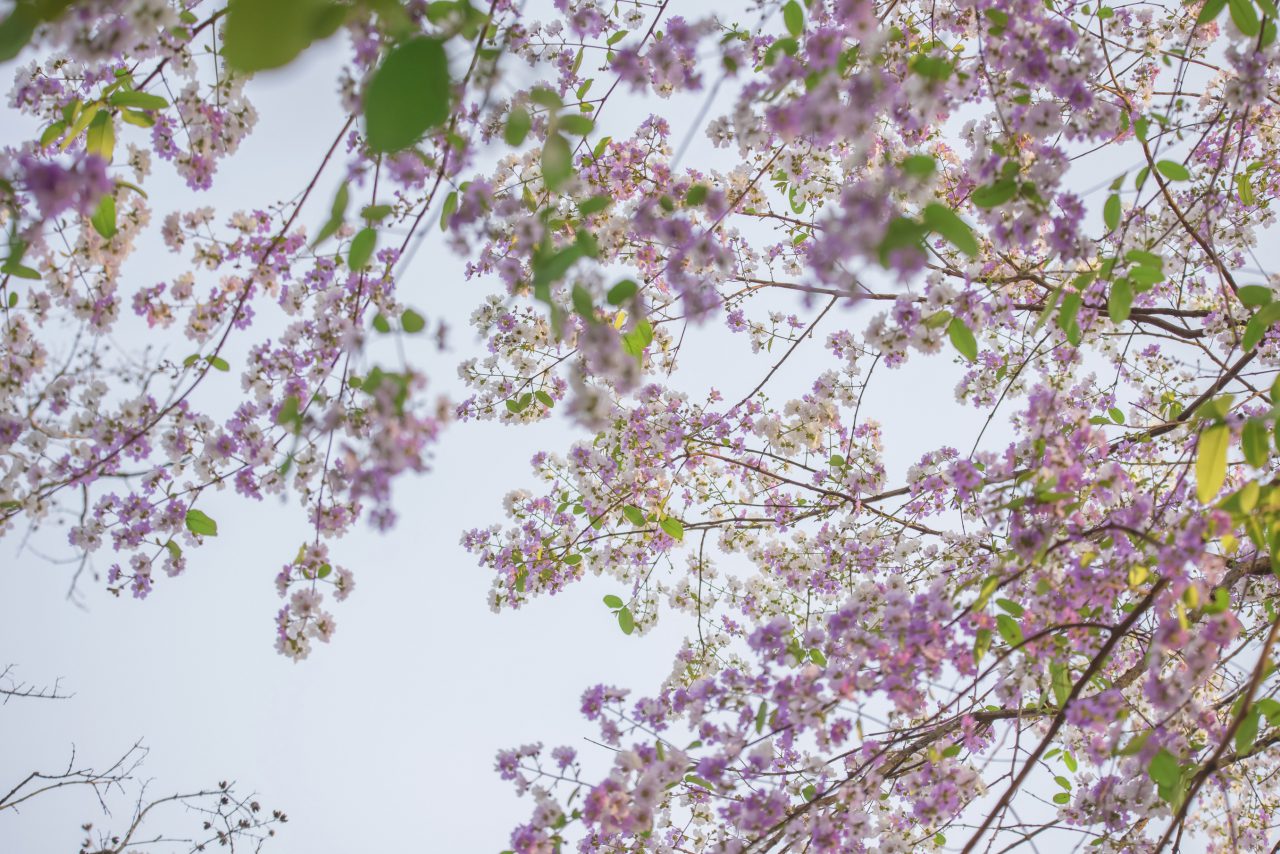In late June my attention turns to crapemyrtles. The hotter and more humid our weather becomes, the more crapemyrtles (Lagerstroemia indica) seem to enjoy life— so consequently they are found throughout the American South where our summers are hot and humid. It asks so little of us— yet we abuse it time and time again.
NOTE: crapemyrtles are also known as "crepe myrtles" and "crape myrtles," but the scientific community seems to have settled on "crapemyrtle," the form I’ll be using.
Native to China, Lagerstroemia indica, has been here for over 175 years, but initially it had one failing: It was terribly susceptible to powdery mildew, a pathogen found throughout the Southeast. In the 1950s, a scientist at the U.S. National Arboretum brought back seeds of Lagerstroemia fauriei from Japan and planted them where the JC Raulston Arboretum now stands in Raleigh. Although its flowers were not as long lasting as those of L. indica, these trees had the advantage of being resistant to powdery mildew, thereby sparking a hybridization program between L. indica and L. fauriei that continues today. Many of these resultant hybrids bear Native American names: ‘Natchez’ was one of the first and is still popular today.
Two years ago, I had a backyard that consisted of a filled-in swimming pool and little else. In my imagination, if I had added some empty liquor bottles and tumbleweed, it would have resembled one of those desolate lots found in boarded-up deserted towns. Coupled with this, I had several terriers intent upon digging holes to China, so a conventional garden was out of the question. And, this is where crapemyrtles solved my problem. This empty backyard had the one ingredient crapemyrtles cannot do without—sun —and even energetic terriers couldn’t dig up two crapemyrtles.
Most crapemyrtles, I discovered, are sited incorrectly. As a specimen tree, it should always stand alone and should not be confused with dogwoods and redbuds, which thrive at the edge of the woodland. A dogwood or redbud is happy peeping out shyly alongside other trees and shrubs; a crapemyrtle looks claustrophobic in the same situation. We prize dogwoods and redbuds for their irregular shapes while a crapemyrtle attains a lovely symmetry by expanding equally on all sides. A dogwood or redbud can cuddle against a house whereas a crapemyrtle looks deformed when planted against the same house. Simply put, crapemyrtles should never be placed against anything, whether it’s a structure, a telephone pole, or another tree. Overhead wires and crapemyrtles are not copacetic. That sad median between the street and sidewalk should never house a crapemyrtle.
Before settling on a crapemyrtle, it’s imperative to do some research. There is a crapemyrtle for everyone who lives south of gardening zone 5 because they come in all sizes, shapes, and colors. There are four types of Lagerstroemia indica x fauriei on the market: (1) dwarf —anything under 5 feet; (2) semi-dwarf—those between 5-12 feet in height; (3) intermediate— those ranging from 13-20 feet; and (4) tree-type— those that are between 20-33 feet tall. Colors range from white to dark red.
Please refrain from committing crape murder. This occurs when the homeowner has either planted the wrong size of crapemyrtle or is advised that crapemyrtles need topping or pollarding, i.e. cutting back the top branches so that the tree looks as though it’s suffering from leprosy. Old timers will tell you that it promotes flowering as sprigs will grow out of the cuts; when in bloom the crapemyrtle will then resemble a lollipop with branches that can barely support the large flowers. When the tree is pollarded, the sprigs are cut back every year until the branch will develop the telltale pollard head, the swelling of the area where the cuts are made.
Pollarding is frequently performed to maintain the tree at a certain height: For example, ‘Natchez’ reaches a height of thirty feet, but I have seen them drastically cut back to 15 feet in an attempt to control the height. It’s far better to do your research first and select a crapemyrtle that only grows to fifteen feet in height instead. And remember, once you have started the topping and pollarding process, there is no going back to the natural form. These practices will also delay the flowering and may shorten the period of the bloom cycle.
Another reason to refrain from committing crape murder is that the crapemyrtle has a beautifully polished bark— almost as though it had been sanded— that is a thing of beauty in the winter. The leprous look of a topped crapemyrtle remains hideous in the winter when leaves can no longer shield its deformity from our eyes. The last reason to refrain from crapemyrtle topping is that it is an unhealthy procedure for the tree, thereby shortening its life.
All this does not mean that crapemyrtles won’t benefit from some judicious pruning. This is a specimen tree, after all, one that deserves the spotlight. If one side hangs closer to the ground than the other side, by all means take out the offending branch. Thinning to increase air circulation is no longer as mandatory, as it once was, since these hybrids are unlikely to develop powdery mildew. Root suckers will spring up around the base and should be cut immediately as they detract from the appearance of the tree. A crapemyrtle with bloomers looks like it needs a change of diapers: Off with the bloomers!
Crapemyrtles require 6-8 hours of sun and a well-draining soil. Failure to bloom is usually due to inadequate sunlight. If you site the crapemyrtle properly, you will have a tree that stuns you in the summer with its profuse blooming while the beautiful bark will add winter interest to the garden.
Eventually I settled on two nice-sized ‘Tonto’ crapemyrtles. Reaching a height of ten feet with an equally wide width spread, they bear fuchsia colored blooms that last for approximately seventy-five days— they also have lovely light chestnut colored trunks. The filled-in swimming pool no longer resembles a deserted empty lot— and the terriers even approve of the two new additions.









